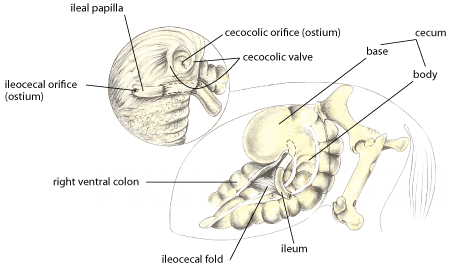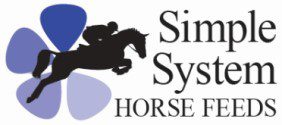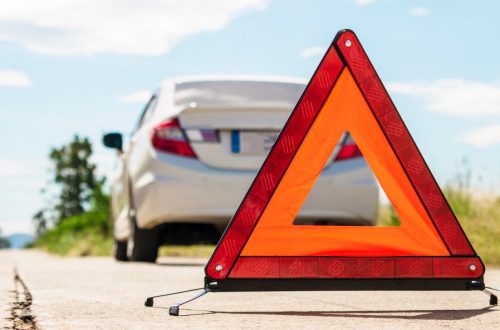
A few words about the “straightness” of the rider
A few words about the “straightness” of the rider
As riders, we are obsessed with the straightness of our horses, and rightly so! Today, the phrase “straightness training” is at the peak of popularity. It is the subject of many excellent articles, research papers, videos and blogs, all listing the benefits of a level/straight horse.
The horse’s straightness can be improved through regular exercise and through the use of a variety of training methods. But just as important, by working on the straightness of the horse, the rider can better understand the biomechanics of his own body and ultimately improve his own straightness.
Even the most talented riders work hard to improve and maintain their straightness.
I found these wonderful photos in one of the posts dedicated to Charlotte Dujardin. The person who wrote it briefly described Charlotte’s perfect alignment, which can be seen from any angle.
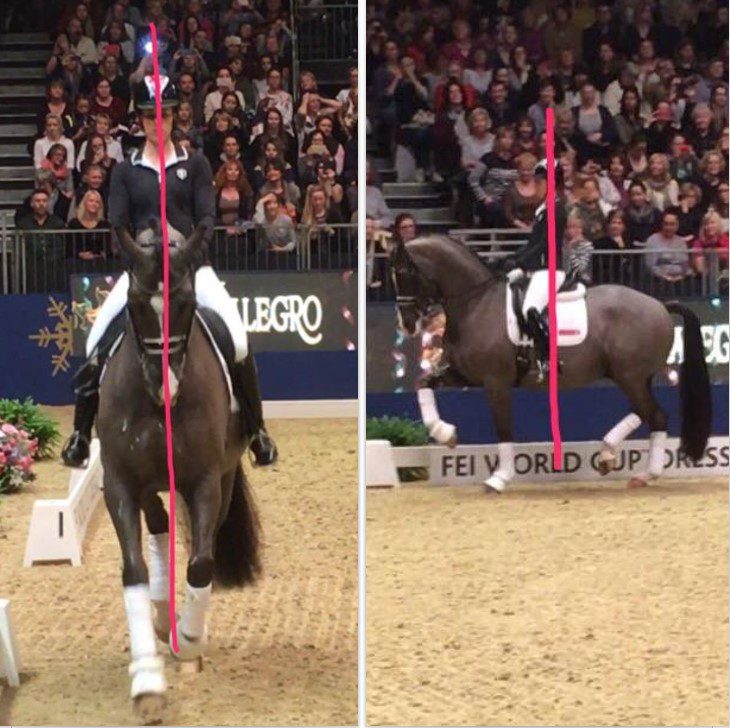
I am convinced that these riders have tremendous body awareness and the ability to self-regulate. This quality may be innate, but the skills can be both developed and improved through practice and self-discipline.
My own riding and training started traditionally and focused mainly on correcting the horse. The epiphany was my introduction to “classic riding” and “biomechanics”. I firmly believe that it is our duty to be the best passenger for the horse, no matter what purpose we ride.
Rider position in the saddle directly affects the quality of his horse’s movements.
Most people have a dominant side or hand (functional asymmetry). This usually does not present a problem in everyday life. However, some activities, one of which is horseback riding, require good bilateral coordination (both hands work together at the same time, requiring the integration of both hemispheres of the brain).
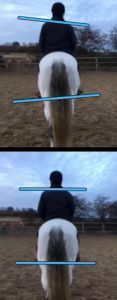
The “naturally” twisted rider in the first photo has a dominant right side. He has a tendency to move the horse more with his right foot, and in doing so he moves his seat to the left and lowers his right shoulder. His right-handed dominance is also shown when riding to the left he moves the horse with his left foot on the outside rein – there is no coordination in this connection. The horse mirrors the rider’s posture – it also twists. It is difficult for her to perform a “square” stop.
The rider in the second photo sits straighter, the seat has been corrected and the weight is better distributed. This alone improves spinal alignment and stabilizes the core muscles. In addition, hip function and leg position are improved. The horse responds by standing up more evenly and seems to work the hindquarters more evenly and correctly.
How to improve body awareness and bilateral coordination?
It may seem counterproductive, but working on one side of the body has many benefits. Often when performing bilateral movements, we allow the dominant side to compensate for the weaker one. Instead, why not try working on one side of your body (unilateral exercises). Not only are both sides forced to load on their own—your muscular and nervous systems work to coordinate and control movement, contributing to important neurological adaptations.
You can work on yourself without going to the gym and without being on horseback.
Pay attention to certain habits – how you usually use the same hand to grab things, or how you walk up stairs using the same lead foot. Start making changes to these habits – try climbing stairs by pushing off with your less dominant foot. You will be surprised how strange and difficult it is not only to do, but also to feel it!
Having worked on improving your weak side, let’s see how we can improve two-way coordination:
1. Symmetrical movements. Do activities that require the use of both hands at the same time more often (for example, catch the ball with both hands).
2. Alternative movements. Perform alternating movements of diagonal limbs (swimming, cycling, skiing, etc.).
Pay attention to “Diagonal” fitness! Lie on your back, stretch your right arm above your head, and pull your left leg, bent at the knee, to your stomach. Lower and straighten your left leg, lower your right arm down and at the same time raise your left arm and pull your right leg to the body.
Do these exercises and soon you will notice the result!
Mary Yannullu (source); translation by Valeria Smirnova.



